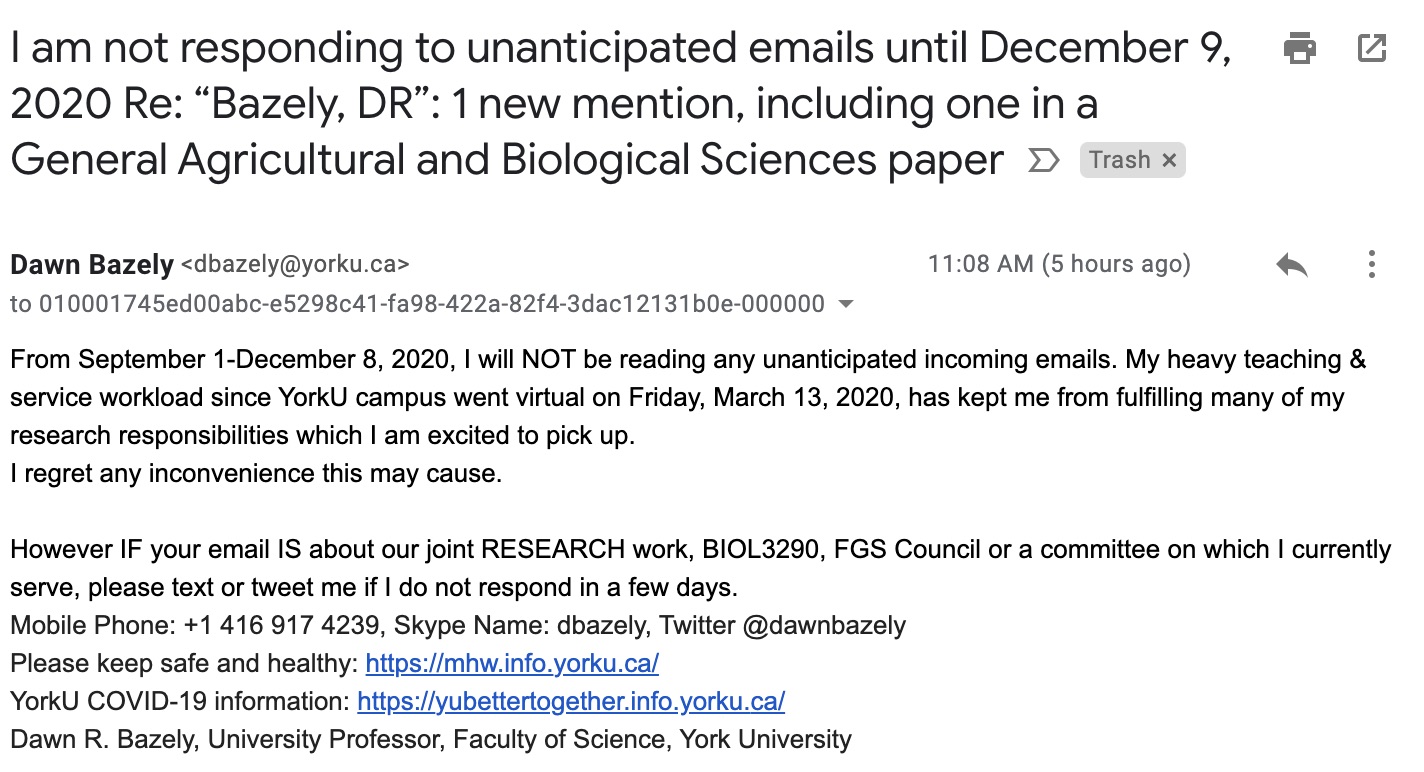 Since March 2020, when the COVID-19 pandemic shut down in-person classes across North America, conversations have proliferated about online learning and the time that it took to teachers to pivot to courses online.
Since March 2020, when the COVID-19 pandemic shut down in-person classes across North America, conversations have proliferated about online learning and the time that it took to teachers to pivot to courses online.
In early April, I decided I must come up with an online substitute for the cancelled in-person field courses that affected about 40 York students. Of course I knew this would be more work than my regular two-week field course, Biodiversity and Watershed Management, that had been scheduled for June 2020.
But, since all my summer field work and conferences were cancelled, what else could I do other than get my lab. onto doing pandemic-compliant research, finish some papers, and attend lots of Zoom meetings? Well, we now know that since lockdown began, many women science professors have been overwhelmed with domestic duties including childcare, and have fallen well behind with their research compared with our male counterparts.
Delivering pandemic-compliant online courses is time-consuming
- My family helped put kits together
- Assembling student field course kits
- Shipping field course kits
My administrative and technician colleagues who help me to deliver regular field courses pitched in as much as possible to help with my virtual course. But, the prep. for my "science-from-home" "kitchen-sink-ecology" course, that included a mailed out student kit, was done from my kitchen by my daughter and I. One challenge was for this course to comply with all the public health and university pandemic policies t issued in March and April.
I then spent May and June working 80-hour weeks, teaching this course to 26 students who had bravely signed up for a mystery learning experience!
Having all demonstrated proof-of-concept for a virtual field course, I'm spending the Fall term making the lab modules available via open access for fellow ecology course instructors to use or adapt, and catching up with that research:
Universities and grocery stores both saw increased online activity
While brainstorming about an online field course in lieu of the in-real-life student experience, I noticed an discourse emerging in mainstream and social media along the lines of: "why should students pay for online courses that are a cheap, poor substitute for in-person university experience?". The underlying assumption is that just about anyone can quickly throw together and deliver an online course that's less effort than in-person teaching. In fact, Kenny and Fluck (2017) found that online course development took more time than preparing content for in-person teaching.
As well, the infrastructure for online learning is pricey. In March 2020, York University bought thousands of Zoom licenses to allow course directors to take their Winter Term courses virtual. Plus, we all had to learn to become Zoom hosts 🙁 (the topic of my next post).
It turns out that supermarkets faced similar issues as they responded to the rapid increase in demand for online groceries. In their July 23, 2020 article in the Financial Times, Why supermarkets are struggling to profit from the online grocery boom, Jonathan Eley and Ryan McMorrow provide some insight into why university students won't be seeing a drop in tuition fees any time soon.
Online grocery sales took 20 years to reach 7% of all supermarket sales, increasing to 13% in eight weeks during the COVID-19 pandemic (please see my previous post about exponential growth). That sounds great, but as Eley & McMorrow explain:
"there is only one problem with the surge in online sales: many supermarket chains are struggling to make a sizeable profit — and in some cases, any profit — from e-commerce because of the huge commitment in resources that it requires."
"Sainsbury’s chief executive Simon Roberts summed the situation up, saying Covid-19 was “moving sales out of our most profitable convenience channel and driving a huge step-up in online grocery participation, our least profitable channel”."
Take-home message -- a quality on-line experience for food and education costs money. What many businesses and institutions perceived as a long-term project, became a short-term imperative really fast.
I have an FT subscriptions and three people can read the entire article here without hitting a paywall: https://on.ft.com/3lVVQs0, but you get the gist...





